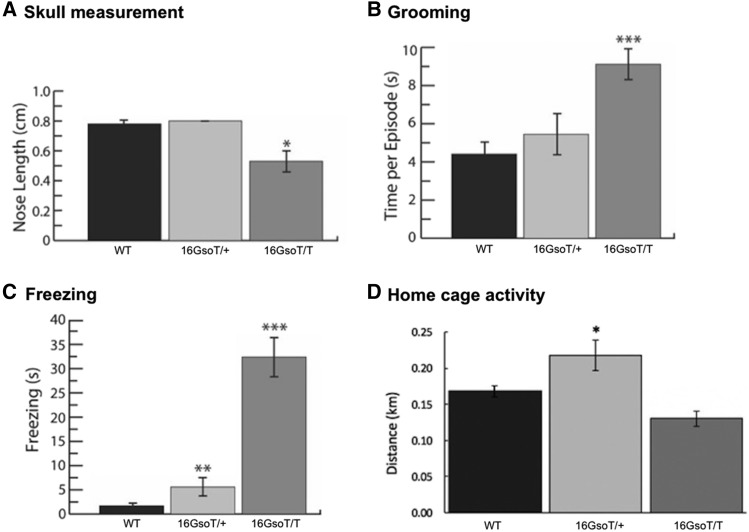Figure 2.
Phenotypic features in 16GsoT/T mutants. (A) Skull measurement: the length from base to tip of the nose was significantly decreased in 16GsoT/T (n = 3) compared to WT (n = 4) and 16GsoT/+ mice (n = 3). (B) Repetitive grooming behavior: the average grooming time for each episode within a 10 min experimental period was significantly increased in 16GsoT/T (n = 9) compared to WT (n = 11) and 16GsoT/+ (n = 12). (C) Freezing behavior: 16GsoT/T (n = 14) froze more in the novel environment compared to WT (n = 10) or 16GsoT/+ (n = 14) in 10 min experimental period. (D) Home cage activity: the average distance traveled (quantified through Topscan software) was increased in 16GsoT/+ (n = 10), but there was no significant difference between WT (n = 9) and 16GsoT/T (n = 5) animals. Skull measurement: ANOVA, *P < 0.05. Grooming and freezing: t- Test, **P < 0.01; ***P < 0.001. Home cage activity: Tukey’s test, *P < 0.05.

